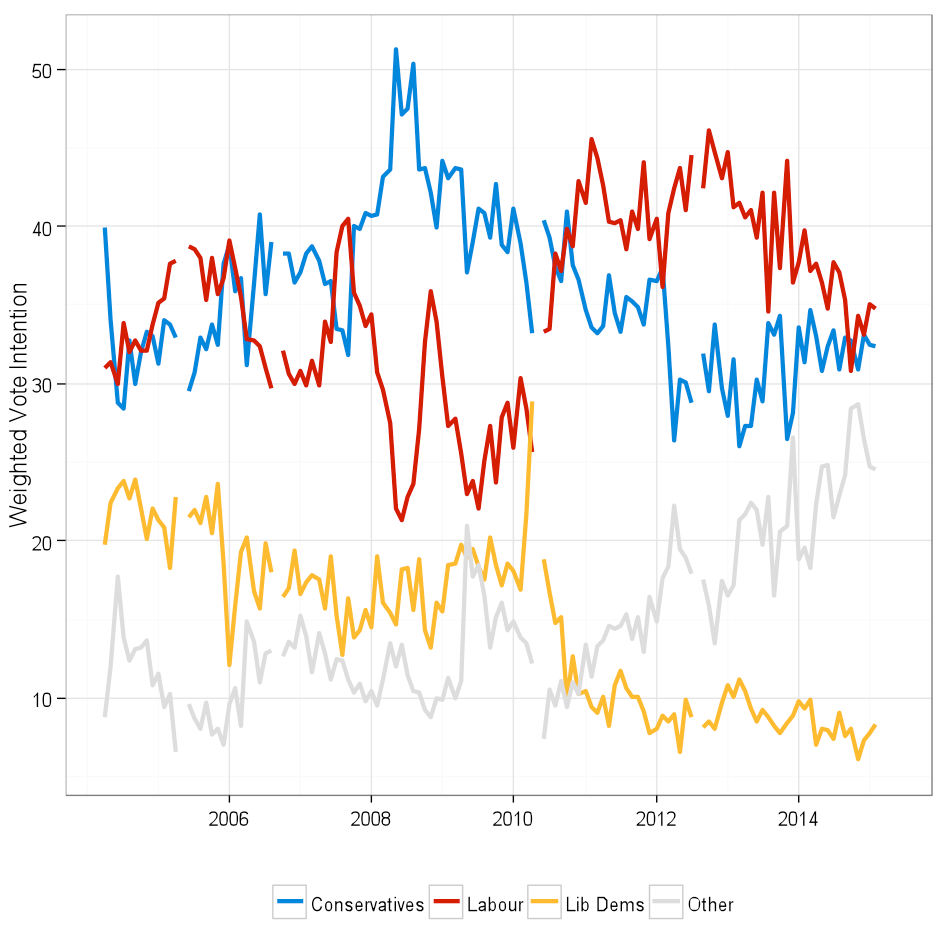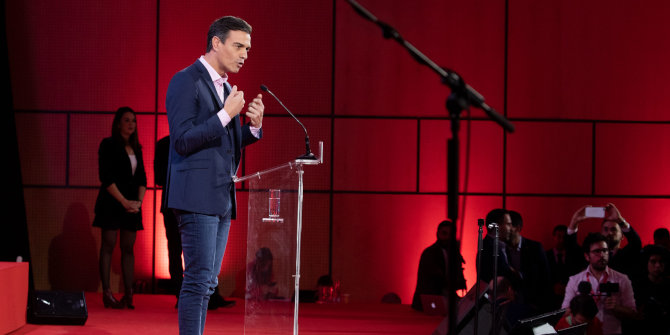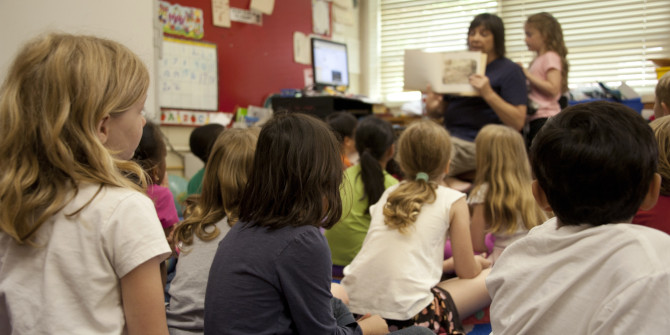
 The 2015 UK general election is less than a week away, with voters set to go to the polls on 7 May. While there are many ways to predict the result, Mary Stegmaier and Laron Williams present a ‘political-economy’ model of party support. Their analysis suggests Labour is likely to finish as the largest party, but that it will remain some way off a majority of seats.
The 2015 UK general election is less than a week away, with voters set to go to the polls on 7 May. While there are many ways to predict the result, Mary Stegmaier and Laron Williams present a ‘political-economy’ model of party support. Their analysis suggests Labour is likely to finish as the largest party, but that it will remain some way off a majority of seats.
Most public opinion polls and forecasting models point to another hung parliament in the 2015 UK general election. In such a tight race, the question now is which party will come out ahead. Our model, which accounts for political and economic conditions, predicts that Labour will win 34.75 per cent of the British vote. This vote share gives Labour a solid 3.5 point lead over the Tories, but neither party will win enough seats for a parliamentary majority. We predict Labour will win 299 seats, while the Conservatives will have 245. Thus, another hung parliament, but this time with a Labour lead in votes and seats.
To estimate our forecasting model, we rely on monthly data over the last 10 years from the Continuous Monitoring Survey. This survey asks respondents “If there were a general election tomorrow, which party would you vote for?” We aggregate these responses each month to tally the level of public support for Labour, the Conservatives, Liberal Democrats and other parties. The figure below shows how support for the parties has evolved since 2004. Of particular importance for the 2015 election is the dramatic increase in support for “other parties”, as well as the decline in Lib Dem support.
Figure: Political-economy model of voting intentions in UK general elections (click to enlarge)
Note: For more information see the authors’ forecasting paper
Instead of using only current party support to predict future party support, we turn to theories of electoral behaviour to construct a more complete forecasting model. From decades of research, we know that political-economy models perform well. These models typically include past party support, economic evaluations, partisanship, and political events. In order to shift from using these factors for explanation to prediction, we measure them three months ahead of time. This approach allows us to combine our knowledge of the drivers of government support with our aim of accurate prediction well in advance of Election Day. Our models predict party vote shares in the May 2015 election with data from February.
The impact of economic evaluations will differ if the party holds the office of Prime Minister or is sitting in opposition. For example, as the economy improves, the Prime Minister’s party should see increased support, while this should lower support for opposition parties. Our model accounts for this. We also include a count of continuous months a party has led the government to capture the political cost of ruling. Over time, support for the governing party naturally declines. This concept is similar to Lebo and Norpoth’s electoral pendulum.
Our political-economy model predicts that Labour will win 34.75 per cent of the British vote, the Conservatives 31.13 per cent, the Lib Dems 7.89 per cent, and the other parties 26.26 per cent. The surge in support for smaller parties with regional concentrations in support means that even with 34.75 per cent of the vote, Labour will fall short of the 326 seats needed for a majority. Using the New Statesman May 2015 Seat Calculator’s Electoral Calculus strong transition model with Ashcroft polls and by-elections, our vote share forecasts convert to 299 Labour seats, 245 Tory seats, and 26 Lib Dem seats. The remaining 62 British seats will go to other parties.
The authors’ full forecasting paper is available here
Please read our comments policy before commenting.
Note: This article originally appeared at the LSE’s general election blog gives the views of the author, and not the position of EUROPP – European Politics and Policy, nor of the London School of Economics. Featured image credit: Natesh Ramasamy (CC-BY-SA-3.0)
Shortened URL for this post: http://bit.ly/1GDFSGb
_________________________________
 Mary Stegmaier – University of Missouri
Mary Stegmaier – University of Missouri
Mary Stegmaier is an Assistant Professor in the Truman School of Public Affairs at the University of Missouri.
–
 Laron Williams – University of Missouri
Laron Williams – University of Missouri
Laron Williams is an Assistant Professor in the Department of Political Science at the University of Missouri.







Seems your preferred political-economy model was far from correct this time. Even though most polls – anticipating a tight race – were wrong, this prediction was even wronger. Unfortunately I might add. Would have favoured your results …